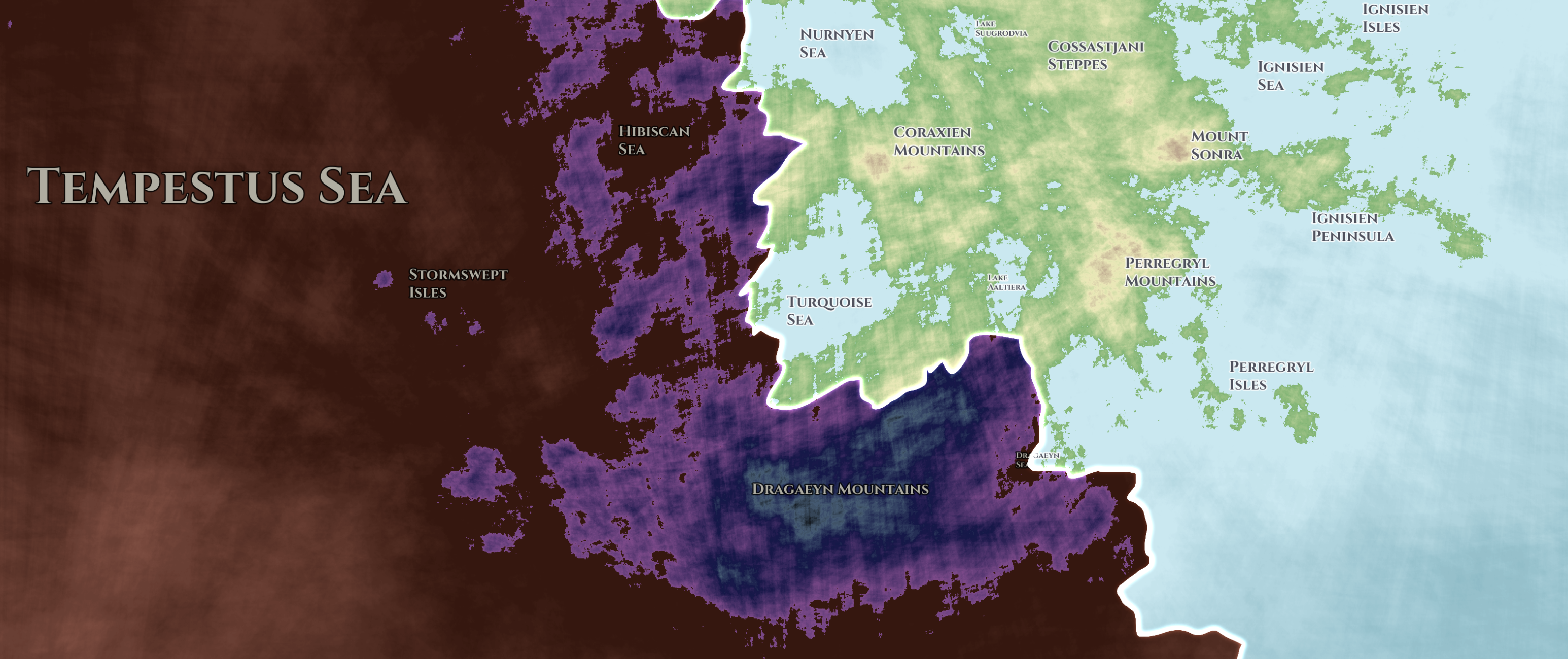The Merelands
Oh great. The estate I've inherited is a bloody puddle.The Merelands are a large region of low-lying freshwater wetlands lying near the northern shores of the Turquoise Sea. It primarily consists of fens, marshes, peat bogs, shallow meres, and minor rivers. The region is considered to be "dreadfully boring" and "devoid of all charm" by Aaltieran nobility, and is perhaps the least contested region in Aaltiera because "nobody would want to actually live there".
Geography
The Merelands are expansive, beginning on the edge of Lake Tremen in the west, and spanning over three hundred miles eastwards across the north coast of the Turquoise Sea, and nearly fifty miles inland at it's widest point. Most of this "land" is low-lying, with a median elevation of roughly 5 metres above sea level.
Most of the region consists of freshwater marshes, fens and peat bogs, interspersed with rivers, streams, and shallow lakes known as meres. The soil is primarily comprised of thick layers of peat. Thin layers of compressed ash from volcanic eruptions have been found in Mereland peat, providing evidence of historical volcanic activity, likely from the geoactive region of Ignei, with the most recent layer thought to be from the 1 Era of Spirits Eruption of Trevigusa.
A constant influx of freshwater is provided by myriad rivers and streams. Most of the influx is provided by the smaller waterways, but a few major rivers flow through or drain into the Merelands, including the Oades, the Tremen, and the Marsein,
The higher portions consist primarily of moorlands where peat has accumulated to the point those portions no longer flood. A stretched of raised land runs most of the length of the coast with the Turquoise Sea forming a natural dyke against particularly high tides.
With the land unsuitable for road construction, numerous canals and artificial waterways have been carved into the landscape to facilitate travel by boat.
Fauna & Flora
The wildlife of the Merelands is rich and diverse, and mostly untouched by humanity's activities.
The dominant plants are sedges, rushes, grasses and sphagnum mosses. Orchids, violets, irises and bladderworts are the most common wildflowers in the region, and carnivorous sundews are widespread. Myriad fungi can be found between mid-summer and late autumn.
Water dwelling invertebrates are especially diverse. Examples include water walking pondskimmers, freshwater mussels and snails, crayfish and shrimps, dragonflies and damselflies, many different butterflies and moths including hawkmoths and tigermoths, leeches, and hundreds of different beetles.
The larger waterways contain various species of fish, including carp, catfishes, sticklebacks, roaches, perches, pikes, breams, shads, lampreys, minnows, and eels.
Various amphibians and reptiles live in and among the pools and waterways. Frogs, toads, newts and small salamanders, small lizards and non-venomous grass snakes.
Mammals include roe deer, voles, mice, otters, badgers and foxes.
Many waterfowl call the Merelands home. Mallards, coots, moorhens, grebes, geese and swans. Cormorants, herons and cranes feast on the fish, and small raptors such as marsh harriers and kites patrol the skies.
Natural Resources
Despite how "boring" the region seems to the upper classes, several healthy industries have cropped up with the assistance of the construction of dykes and windpumps for drainage.
Peat is one of the only natural resources in the area, and peat cutting is a major industry.
A number of meres, both natural and artificial leftovers from peat cutting, are used to farm various freshwater fish and mussels for local consumption and export.
Tourism
Who wants to visit a marsh?
Type
Wetland / Swamp
Characters in Location


Comments